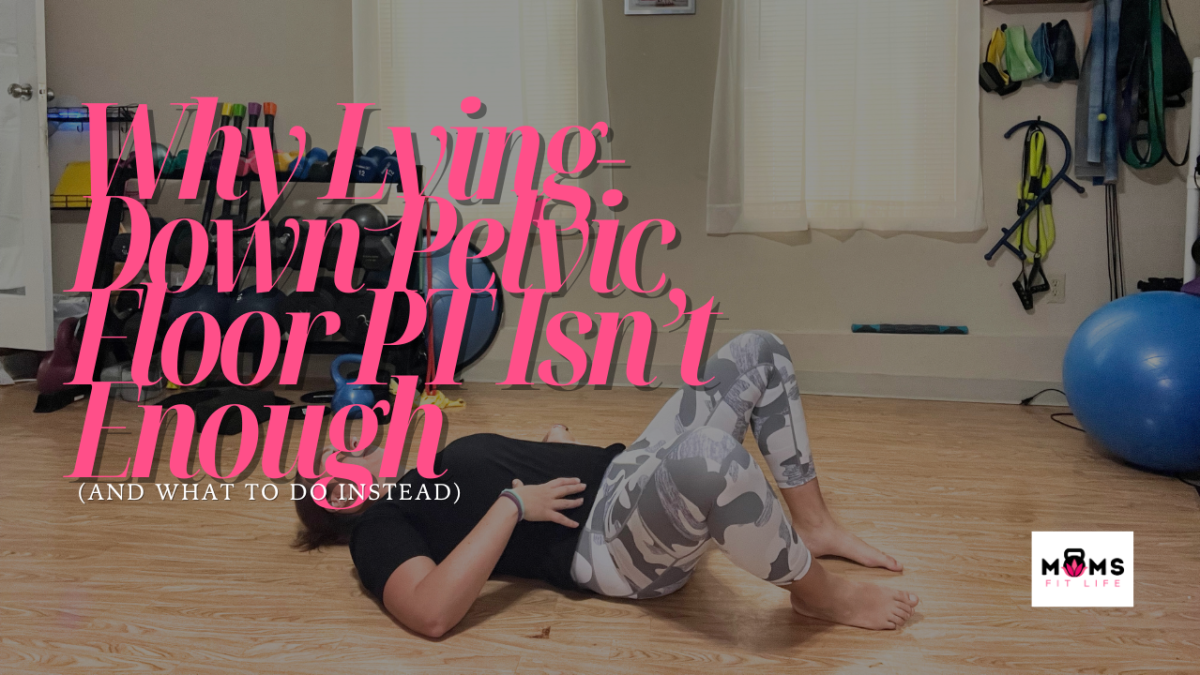Why Lying-Down Pelvic Floor PT Isn’t Enough (and What to Do Instead)

Lying-down pelvic floor therapy is just the start. Learn why standing, moving exams—and whole-body work—matter for lasting relief and strength.
If you’ve been to pelvic floor physical therapy and most of the session was spent lying down, you’re not alone.
Maybe you were told to do some breathing, maybe a few Kegels. Maybe there was an internal exam.
And you left thinking, Okay... but why does everything still feel off when I stand up?
If your pelvic floor PT isn’t watching how you move, squat, or carry your kids, you’re missing part of the picture—and maybe the real solution to your symptoms.
Before we talk about what to do instead, let’s cover why lying-down pelvic floor therapy does have value—and where it falls short when it comes to real-life movement and strength.
Why Lying-Down Pelvic Floor Assessments Matter
When you’re newly postpartum or just starting out in pelvic floor rehab, lying down can be a helpful starting point.
In this position, your pelvic floor isn’t working against gravity, which gives your provider the chance to:
- Observe pelvic floor function without added pressure
- Do an internal exam or check for prolapse
- Monitor breath patterns and abdominal engagement
- Help you feel your pelvic floor and start connecting to those muscles again

It’s a low-load, controlled way to assess how your core and pelvic floor are doing—especially if you’re experiencing a lot of discomfort or symptoms like leaking, heaviness, or pain.
But here’s the truth:
Your pelvic floor doesn’t just support you when you’re lying still. It needs to work when you’re moving, lifting, shifting, squatting, and stabilizing—and that requires a different kind of assessment.
Why Movement-Based Pelvic Floor Assessments Are Essential
You might feel fine doing a Kegel on your back. But what happens when you’re lifting your toddler, pushing a stroller uphill, or carrying groceries?
If your pelvic floor symptoms show up when you’re standing, moving, or working out, it makes sense that your assessment should involve those same positions.
A movement-based pelvic floor assessment might include:
- Squatting, lunging, or standing single-leg to observe core and pelvic floor response
- Breathing assessments during load or exercise
- Checking for compensation patterns (like breath-holding or glute clenching)
- Identifying pressure mismanagement or loss of core control under movement
The goal is to see how your body responds under real-life conditions—not just in a sterile, flat position on a table.

A Full-Body Approach: What Else Should Be Assessed?
Here’s the part that most pelvic floor conversations leave out:
Your symptoms might not be coming from your pelvic floor alone.
That’s why in effective pelvic floor rehab, your provider should be checking:
▸ Rib Cage Position
If your ribs are flared or narrow, your diaphragm (which works closely with your pelvic floor) can’t function well. This affects core pressure and stability.
▸ Feet and Ankles
How your feet strike the ground can shift everything upstream—from your knees to your hips to your pelvic floor.
▸ Hip Strength and Mobility
Tight, weak, or unbalanced hips can cause uneven load transfer through your pelvis, leading to instability and SI joint or pelvic pain.
▸ Jaw and Neck Tension
Surprisingly, these areas can create tension patterns that mimic or worsen pelvic floor tightness.
The bottom line? The pelvic floor doesn’t exist in isolation, and neither should your recovery plan.

If Your PT Only Assesses You Lying Down, Here’s What I’d Do
1. Start a bigger conversation with your PT.
Explain how your symptoms show up during movement, workouts, or real-life tasks. Ask if they can assess you in those positions. If not—it might be time to move on.
2. Ask for recommendations.
Ask other active moms or local groups for names of PTs who assess standing, squatting, and dynamic movement.
3. Look for a PCES.
As a Pregnancy & Postpartum Corrective Exercise Specialist, I help women bridge the gap between rehab and real-life movement. If your therapy hasn’t felt complete—I’m here to help.
4. Ask more questions.
Be curious about how your whole body is working. The more information you gather, the faster you’ll make progress.
Lying-down assessments have their place—but if you’re still leaking, feeling pain, or not trusting your core during workouts and daily life, it’s time to go deeper.
Your pelvic floor rehab should reflect the way you actually live and move.
That’s exactly what we do in my 1:1 coaching programs—where every plan is built around your movement patterns, symptoms, and real-life goals.
👉 Ready to feel stronger, leak less, and finally move with confidence?
Email jen@momsfitlife.com today!
We’ll look beyond your pelvic floor and design a full-body plan that gets results you can feel.

 jen Landry
jen Landry 
